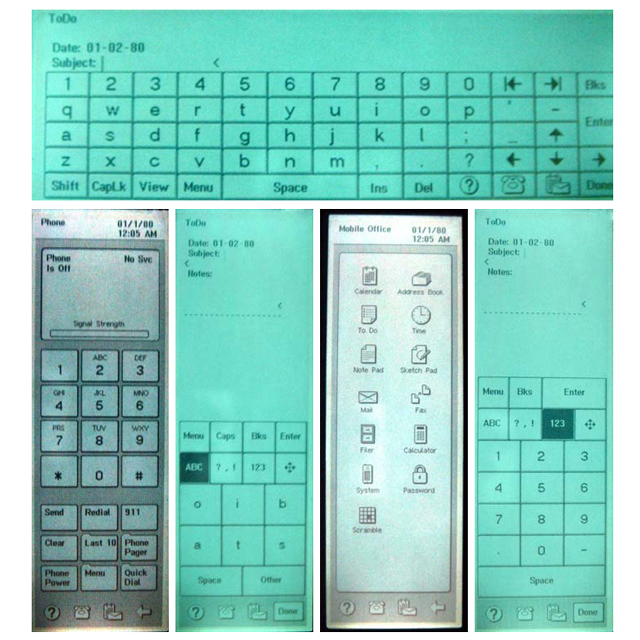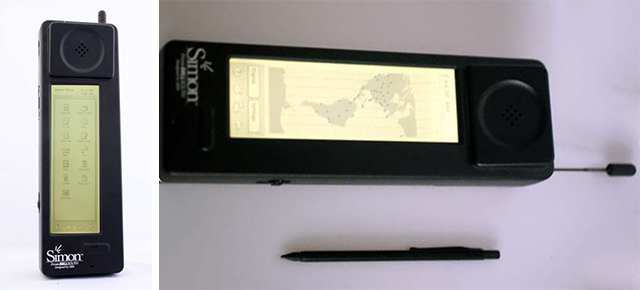Most of us can trace back the recent history of smartphones through a plethora of Androids, iPhones, and Blackberrys. Maybe you recall a nascent phone-PDA hybrid from Palm or Kyocera. But I bet you don’t remember the IBM Simon, the world’s first smartphone, which hit the streets 20 years ago today.
Simon was so advanced, people didn’t know quite what to call it — when it hit the streets on 16 August, 1994, the term “smartphone” was still three years away from entering our vocabulary. IBM called it a “personal communicator phone”, meant to compete with PDAs from companies like Apple, Casio and Tandy.
But Simon offered something those early PDAs didn’t: The ability to make and receive phone calls. It was the device’s defining feature, so much so that IBM touted it as primarily a phone, just one with built-in PDA capabilities. From IBM’s November 1993 press release:
According to BellSouth Cellular Corp.’s product development manager Rich Guidotti, Simon represents the first real personal communicator because it was designed to be a cellular phone — a communications device — first, and a computer second.
The features on this great-great-grandphone were pretty limited by 2014 standards: Simon could make calls, receive pager messages and send and receive emails. It had a calculator, a calendar and an address book. And it could send and receive faxes, using either the on-screen keyboard or a stylus to transmit hand-written notes or sketches.
Yes, a touchscreen. Simon’s 1.5 by 4.5-inch, side-illuminated, radioactive-puke-green LCD reacted to either stylus or finger touch. Reviews griped that the tall, narrow screen made it hard to read or reply to faxes. The option to hand-write responses helped somewhat, and the keyboard even had an early form of predictive typing, showing a small portion of the keyboard and offering only the most logical next letters based on what you’d already typed.

Simon’s various screens. Photos from Bill Buxton’s collection at Microsoft Research.
Unfortunately, the limitations of 1994 technology meant that Simon — the size of a portable Bluetooth speaker, weighing in at half a kilo, with a battery that could only support 60 minutes of call time — never really caught on in the market. When it first hit, Simon was priced at $US900 with a two-year BellSouth contract. Subsequent price cuts eventually brought the price down to $US600, but it wasn’t enough. BellSouth only sold 50,000 of the devices, most of which were later recalled by IBM and destroyed.
Still, it’s fascinating to see how far we’ve come since Simon’s brief tenure. Nobody’s trying to send faxes from their smartphones today, but every device that fits the term today has email, calculator, and calendar functions, and they’re all controlled by touchscreen.
And Simon was the first device to grapple with a problem smartphone makers are still trying to solve today: The perfect screen size. Home Office Computing‘s 1995 review of the IBM Simon echoes a complaint we still here today.
It may be that we’re still asking too much of PDAs. For example, how can you possibly fit an acceptably large touch screen on an object that’s supposed to fit in your pocket?
In 2014, we still haven’t quite figured that out.
Perhaps most interesting of all is the way our emphasis on smartphone capabilities has changed. In 1994, IBM touted Simon as a phone first, with additional features added to the bedrock capability of making and receiving calls on the go. Today, we use our smartphones for email, texts, and about a million different forms of social media — and maybe, if we absolutely have to, we make a few phone calls.
Happy 20th birthday, Simon. You’re the one that started it all.
